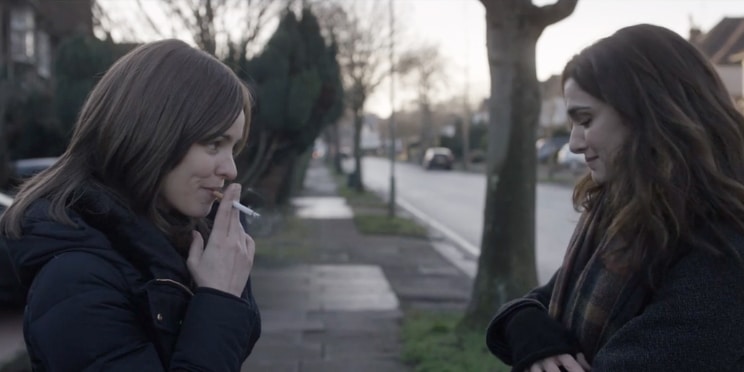Some of the most creative films can find their source material in a piece of literature. But what do we get out of giving these stories a unique re-telling?
Many films as of late that have been finding their way to the big screen are not stories being told for the first time. They are often based on pre-existing novels—more often than we might realize. Of course, there are the obvious adaptations of the famous classics, but the ones that often go unnoticed are the sleek arthouse flicks that fly under the radar in terms of their status as adaptations.
Two of this year’s most prominent indie releases fall under this category: Lynne Ramsay’s visceral thriller You Were Never Really Here and Sebastián Lelio’s religion-infused LGBT drama Disobedience. It is significant that both of these adaptations were given such focus on their artistic direction—the purpose of these films isn’t just to put these novels up on a screen in an effort to make more money (which is often the case with major blockbuster adaptations of popular novels), but to breathe new life into the story and share it with a broader audience.
Both films are based on relatively lesser-known books of the same name: “You Were Never Really Here” having been penned by Jonathan Ames and “Disobedience” written by Naomi Alderman. This obscurity of source material tends to be a common trait among these types of films when based on a prior work. This gives directors more liberty with the rendering of their story, and more freedom to be ambitious with where they take it. Their film is likely how most people will first encounter the story, which allows more room for emphasis on authorship by the filmmakers. There is no need to worry about an overbearing fanbase that will outrage at differences between novel and film, as can be the case with adaptations of more popular novels.
These adaptations are able to utilize the medium of film to their advantage to enhance or alter the storytelling in ways that cannot be done through a novel alone, and by taking the art film route, this format can be used to its full advantage.
You Were Never Really Here follows a man named Joe (portrayed with a devastating performance by Joaquin Phoenix) who tracks down missing girls for a living but is haunted by his own past. It is ultimately a tale about trauma, and images are masterfully used onscreen to communicate memories and the emotions associated with them in a way that is different from the way in which words can.
While it follows a fairly chronological narrative overall, the film uses some non-linear storytelling techniques to convey a sense of context for the main character’s state of being. Often without any sort of concrete segway, the film would cut to the same memory from Joe’s childhood before eventually cutting back to the present day. The abrupt transitions demonstrate the brutal effect these memories have and the unpredictability of when exactly they will pop into the protagonist’s head. Joe’s mind would also often revert to the same memory, the film utilizing different cuts or longer takes to reveal more and more of the presence in his mind that haunts him, which is blurry and obscure to the audience when first shown and only becomes clearer towards the end of the film. This type of presentation of memory is something very unique to the visual medium and has the ability to creatively toyed with as it is here.

Disobedience is about a young woman named Ronit (Rachel Weisz) who returns to visit her Jewish Orthodox community after her father’s death having spent several years estranged from it. While there, she reconnects with an old romantic flame (Rachel McAdams), who is now married to Ronit’s male cousin.
It is clear from the outset of the film that Ronit has been ostracized by the community and driven away from it for reasons that are initially unclear. However, it isn’t immediately that any of the characters are willing to verbally point out this fact after Ronit returns, much less declare why it happened. Rather, there is a clear built tension between the characters created by the actors onscreen, and the film pulls off scenes with extended periods of silence that are nonetheless very telling. This technique of visual communication is yet another that is allowed to be wholly embraced in these types of films when adapting pre-existing stories.
Both stories are quite emotionally poignant, and their ultimate power over the viewer lies in striking these emotions correctly. In not being able to rely solely on words, filmmakers take on the responsibility of making sure this is done with the advantage of having their own unique artistic perspective. If done unsuccessfully, these stories will fail to resonate with viewers in the way they must. That is why their transformation into these sorts of artistic endeavors is so important—there is room for this balance to be achieved.
This isn’t to say that art films are better than the books they’re based on—they can often both evoke quite similar emotions and experiences, but go about doing so with much different executions. In fact, movies often inspire viewers to seek out their source materials. But what is most important is that these stories are continuing to be told at all and that they are resonating with the hearts and minds of those who encounter them.
The post The Transformation from Novel to Arthouse Film appeared first on Film School Rejects.


0 comments:
Post a Comment